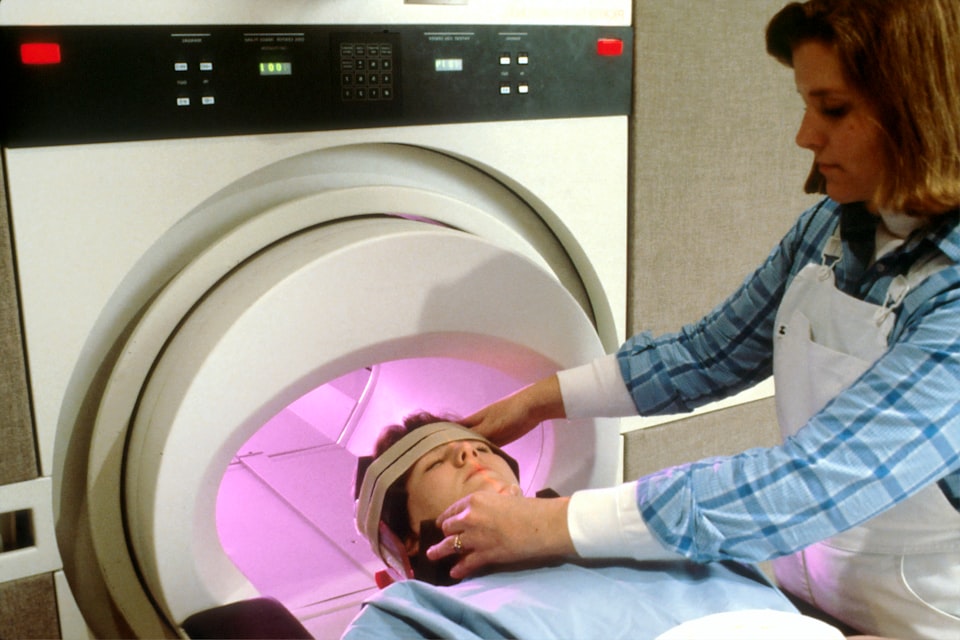MRI explained really simply

You can listen to this article if you prefer
MRI is magic. I refuse to be told otherwise.
However that doesn't get you any points in your FRCA exam, so there are some factual sciencey bits you need to know. Here is our really simple explanation that will get you through a viva, and hopefully makes a bit of sense of well.
There's loads of hydrogen in the body
Your body has lots of water in it, hopefully, and water has two hydrogen atoms in every molecule. So if we're trying to make a map of the body, then it makes sense to use hydrogen as the atom that we 'measure'.
Hydrogen atoms have a thing called 'spin'
They're not actually spinning like a top. Or maybe they are, we've never actually seen them properly. But let's say they are.
If you put an atom that has 'spin' in a strong magnetic field, it will align with the magnetic field, like iron filings next to a magnet.
Cool.
Protons with spin, in a magnetic field, can absorb and emit energy
This is the important bit. If all of your hydrogen ions are in alignment with a magnetic field, and you fire a pulse of electromagnetic radiation at them (at a very specific frequency), they'll absorb this energy and deflect out of alignment.
Kind of like flicking a spinning top and making it wobble.
Very quickly afterwards, they'll then flip back to being aligned with the magnetic field again, and release this energy, again as electromagnetic radiation.
Now you just need a sensor
So you've fired a pulse of radiation at a human body that's inside an enormously powerful magnet. So all of the aligned hydrogen atoms have absorbed the energy, and then emitted it again in different directions.
If you can put a bunch of sensors around the body, and tell the sensors what type of signal to expect and when, then they can work out where that impulse of energy came from, (a bit like a GPS satellite) and therefore where that hydrogen atom is.
Do this a whole bunch of times very quickly and you can build a map of all the hydrogen atoms in the body.
That's an MRI scan.
Sort of.
Some VIVA questions
What is superconductivity?
- Electrical resistance in a wire coil reduces to zero below a certain critical temperature
- MRI scanner coils are cooled to around 5 Kelvin by liquid helium
What implanted objects can harm a patient in an MRI scanner?
- Pacemaker
- Defibrillator
- Cochlear implant
- Nerve stimulator
- Joint replacement
- Schrapnel or metal debris, particularly any metal in the eye
Which part of a laryngeal mask airway can affect an MRI image?
- The pilot baloon
- It has a little ferromagnetic spring that can cause interference
What are the hazards of an MRI?
- Very strong magnetic field
- Loud noise
- Radiofrequency heating of metal components
- Risk of helium escaping and hypoxic environment